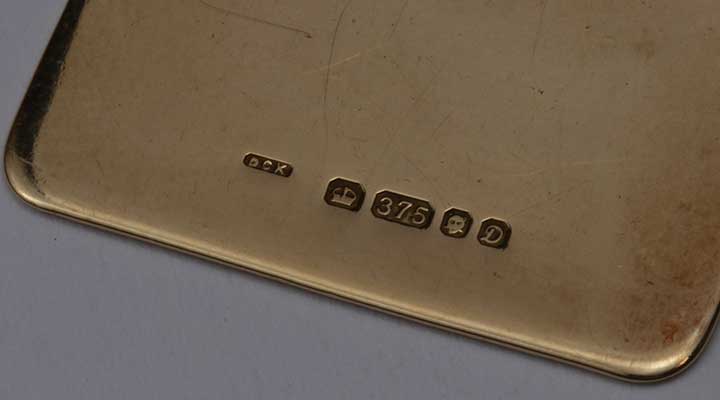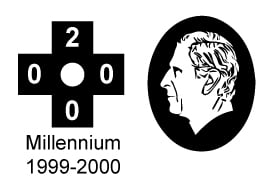Gold Hallmarks
A Complete Guide
Hallmarks serve as a guarantee of an item's precious metal content, offering consumers complete reassurance of its purity and authenticity.
In the UK, there are strict regulations governing the sale and description of items made of gold, platinum, and palladium.
- Gold and Palladium items weigh more than 1g
- Platinum items weigh more than 0.5g
To meet these criteria, an item must adhere to the following:
The item must be hallmarked when:
Please note that the requirement for hallmarking refers to jewellery and other manufactured items but not to ‘investment’ precious metal coins and bars.

The Application of Gold Hallmarks
Hallmarks are applied by a recognised Assay Office which will test the item and apply the appropriate hallmark.
The ways in which hallmarks are applied come in three forms. The traditional techniques of hand punching and hydraulic press punching are still prevalent in today’s industry. However, many hallmarks are now laser-etched onto items. This method is used particularly for hollow, highly finished, or intricate items. This ensures precision and compliance with hallmarking regulations.

Compulsory Marks
There are three compulsory elements of a hallmark:
1. The Sponsor’s Mark is the unique mark of the company or person responsible for sending the item for hallmarking. The sponsor may be the original manufacturer, importer, wholesaler, retailer or an individual. To obtain a Sponsor’s Mark, you must register with an Assay Office.
2. The Millesimal Fineness Mark shows you the metal type, as no precious metals share the same numbers. It also shows you the fineness, or purity, of the precious metal content in parts per 1000. For example, 18 carat gold is 750 parts per 1000, by weight.
3. The Assay Office Mark identifies where the item was tested and marked. There are only four UK Assay Offices that are currently authorised to apply approved hallmarks in the UK and these are located in Birmingham, Edinburgh, London and Sheffield. Older, antique jewellery pieces may display hallmarks from former Assay Offices that are no longer active such as Norwich, York, Exeter, Glasgow, Newcastle and Chester.

Optional Hallmarks

The Date Mark, defined by a stamp letter, shows the year in which the item was hallmarked.

2. Commemorative Marks are special hallmarks to celebrate major events, such as the passing of the Millennium and King Charles the III’s coronation.
Commemorative Marks are special hallmarks to celebrate major events, such as the passing of the Millennium and King Charles the III’s coronation and can be applied in addition to the legally required marks.

International Convention Marks - since 1972, the UK has been a signatory to the International Convention on Hallmarks. This means that UK Assay Offices can apply the Common Control Mark, which will then be recognised by all member countries in the convention. Conversely, convention hallmarks that have been applied in other member countries are recognised in the UK.

Common Control Marks - Gold
| Austria | Netherlands |
|---|---|
| Croatia | Norway |
| Czech Republic | Portugal |
| Denmark | Slovak Republic |
| Finland | Slovenia |
| Hungary | Sweden |
| Ireland | Switzerland |
| Israel | Serbia |
| Latvia | UK |
| Lithuania | (Italy have been invited) |